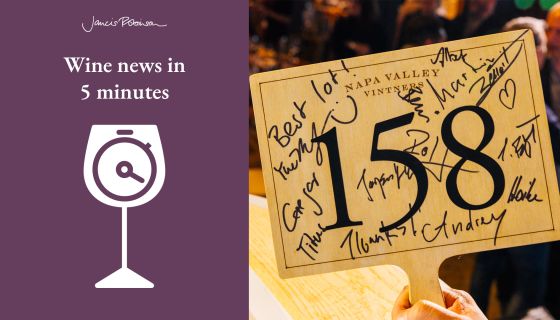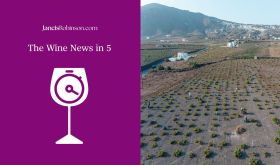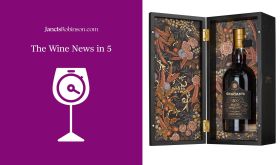Négociant v grower in Bordeaux
You may remember that in my news update on 6 February, I told you that French Prime Minister Gabriel Attal, in a quest to end ongoing protests, doubled the controls for a 2018 law that required farmers be paid a fair price (defined as their cost of production plus 8%) by supermarkets and industrial food processors. That law is called the EGAlim law, and it had never successfully been wielded by a grower against a buyer of agricultural commodities … until last Thursday, 22 February when a year-long legal dispute between grower Rémi Lacombe, who owns Château Bessan-Ségur, and négociants Excel and Ginestet came to an end. The Bordeaux Commercial Court ordered Excel and Ginestet to pay Lacombe a combined sum of more than €350,000. Both négociants had paid Lacombe far below his cost of production.
This is an incredibly important ruling as it sets a precedent that the EGAlim law will be enforced in French courts. Prior to this ruling, growers felt that they had to accept a price dictated by the négociant or they would be passed over and the contract would be offered to a different grower who was willing to sell at a loss. Of course, this ruling doesn’t solve the issue that there is an oversupply of grapes and not enough contracts to go around – but it at least provides legal protection on pricing and forces négociants to recognise the price of farming during contract negotiations. Without that protection and with the current oversupply, it’s likely that prices would have been driven down even further. I only wish that the EGAlim law could help growers outside France as well.
Grants for sustainable wine packaging
On 19 February the Australian Business Research and Innovation Initiative (BRII) opened a AU$7.5 million round of funding targeting energy efficiency in commercial fishing, safe drinking water for First Nations, and sustainable packaging innovation for premium Australian wines. The funding is only available for start-ups and small and medium enterprises, and $100,000 is available to any applicant whose idea is approved. To those who receive grants, ideas are supposed to be tested over three months and if the idea seems feasible, the organisation may be invited to apply for a million-dollar grant.
This is awesome news! I love the idea of up to 75 organisations pouring ideas into not just alternative packaging but energy efficiency and safe drinking water. But because this is a wine-related publication, I’m going to ignore the other topics and remind you that packaging, specifically glass packaging, is one of the most carbon-intensive areas of the wine industry. It’s why our site names and shames for bottle weights; it’s why The Wine Bible author Karen MacNeil has announced she’s no longer reviewing wine in heavy glass; it’s why you see so many producers changing their glass. Producers, if you’re listening: if you’re not in lightweight glass, you’re behind. Drinkers: if you’re still buying based on bottle weight, stop that! Look for lightweight glass, look for delicious bag-in-box wines, check out Tablas Creek’s blog on the subject, check out bottle reuse schemes, try wines in ‘bagnums’. While glass is the ideal package for long-term ageing and you should consume wine in alternative formats shortly after purchasing, whatever we can do to lessen the carbon emissions of packaging and still have delicious wines, we should be doing. Most rosés, fresh white wines and juicy reds don’t need to be packaged in glass!
An irritating headline on health
A middle-market tabloid newspaper known for inflammatory headlines, ie the Daily Mail, published a headline last week that read ‘Why red wine really ISN’T good for your heart, experts trash 30 years of research on benefits, saying it’s “hugely flawed”.’ Then the Washington Times picked it up and at this point it’s probably elsewhere as well … I was fine with the New York Times article on ‘How Red Wine Lost its Health Halo’ – it is well researched and balanced … but these latest ones are uncalled for, poorly written and abound in errors.
If you happened to read the article in question, I’d like you to know that when they say, ‘red wine is linked to high blood pressure, irregular heartbeat and cancer’ you should replace ‘red wine’ with ‘alcohol’. When they state, ‘according to Dr Cho, there’s no good evidence that wine is less harmful than other types of alcohol’ – that’s not true. In early 2023 there was a comprehensive review of studies in the open-access journal Nutrients that states in its opening paragraph, ‘The analysis clearly indicates that wine differs from other alcoholic beverages and its moderate consumption not only does not increase the risk of chronic degenerative diseases but is also associated with health benefits particularly when included in a Mediterranean diet model.’ The journal took extraordinary pains to outline the risks associated with heavy alcohol consumption while analysing 24 studies (pared down from 7,042 using the Egger test to eliminate those with publication bias) that, despite all analysis, held up that red wine is in fact more heart-healthy than other forms of alcohol.
I could continue but I’m going to leave it there and remind you to check your sources, check your source’s sources, remember that inflammatory headlines trend, remember that governments pay a lot of money because of alcohol abuse and are keen not to, and remember that wine is food and just like any other food, can make you ill when overconsumed.
Premiere Napa Valley 2024 wine auction
Ending on a lighter note – I was just down in Napa for Premiere Napa Valley. This trade auction funds the regional body’s marketing, travel, education and outreach for the entire year (see here for more on the importance of trade auctions). PNV raised over $3 million for the trade body, down from $3.4 million last year but still a very good showing. While I’ve seen publications say it is concerning that the auction raised less, there are a number of factors that are contributing to that, from the current economy to the fact that it was mostly the 2022 vintage that was on display and, due to heatwaves at the end of the season, it is less anticipated than 2021 and 2023. Despite that, I thought all the 2022s were showing incredibly well and I’m looking forward to seeing the vintage come into its own. But, before that, our site will have coverage on the outstanding current-release 2021s coming out shortly.
Photo at top courtesy Napa Valley Vintners.
This is a transcript of our weekly five-minute news broadcast, which you can watch below. You can also listen to it on The JancisRobinson.com Podcast. If you have breaking news in your area, please email news@jancisrobinson.com. And if you enjoy this content and would like to see more like it, please subscribe to our site and our weekly newsletter.













